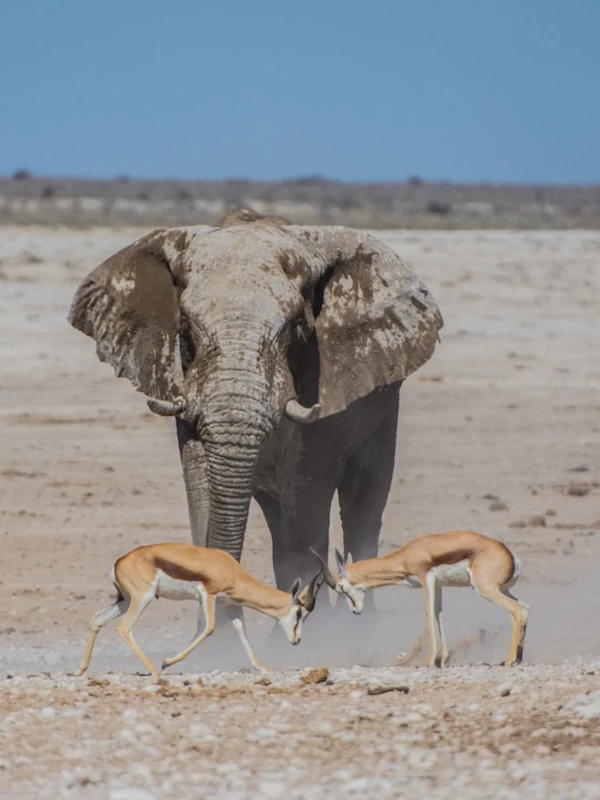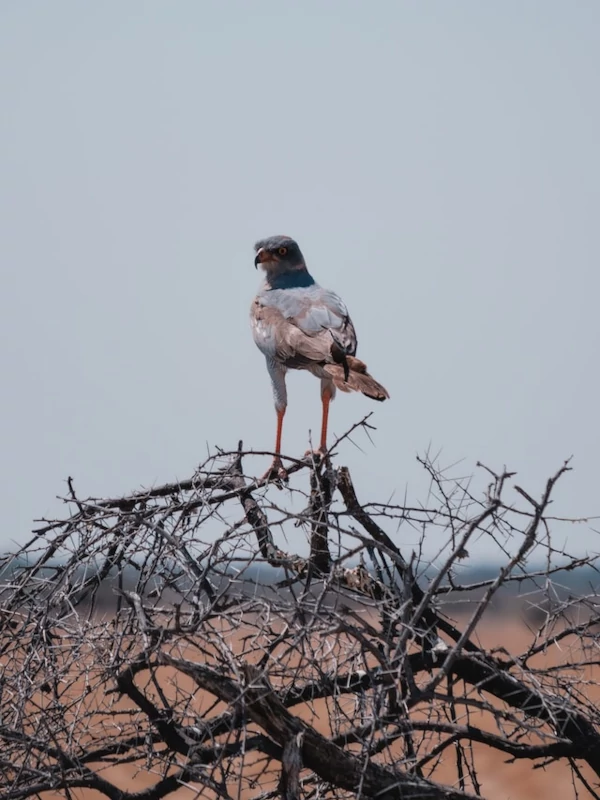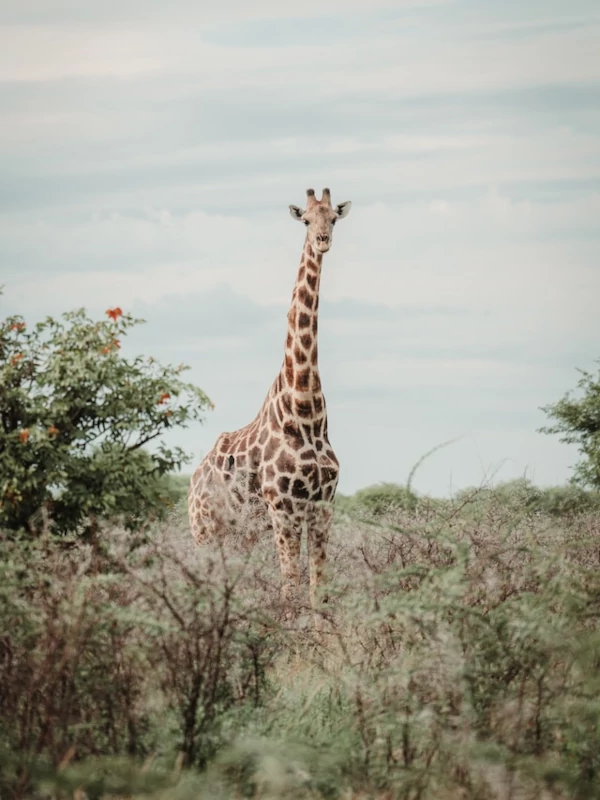The park is a haven for wildlife enthusiasts, boasting an impressive variety of species adapted to the arid conditions. Visitors can expect to encounter iconic African wildlife, including elephants, lions, leopards, cheetahs, and rhinoceroses. Etosha is also celebrated for its unique waterholes, where animals gather to drink, offering unparalleled opportunities for wildlife observation and photography. The park's well-maintained network of roads and waterholes makes it accessible for self-drive safaris, providing visitors with the freedom to explore and discover the wonders of this pristine wilderness at their own pace.
Etosha National Park is not only a wildlife enthusiast's paradise but also a destination for those seeking tranquility and solace in nature's embrace. The park's ethereal landscapes, vast horizons, and extraordinary biodiversity make it a place of both wonder and serenity. Whether you're captivated by the sight of a majestic elephant against the backdrop of the Etosha Pan, fascinated by the unique desert-adapted species, or simply wish to immerse yourself in the profound silence of the Namibian wilderness, Etosha offers an unforgettable African safari experience that transcends the ordinary. With its stark beauty and abundant wildlife, it's no wonder that Etosha National Park is considered one of Africa's most captivating natural wonders and a must-visit destination for those seeking the magic of the wild.


















